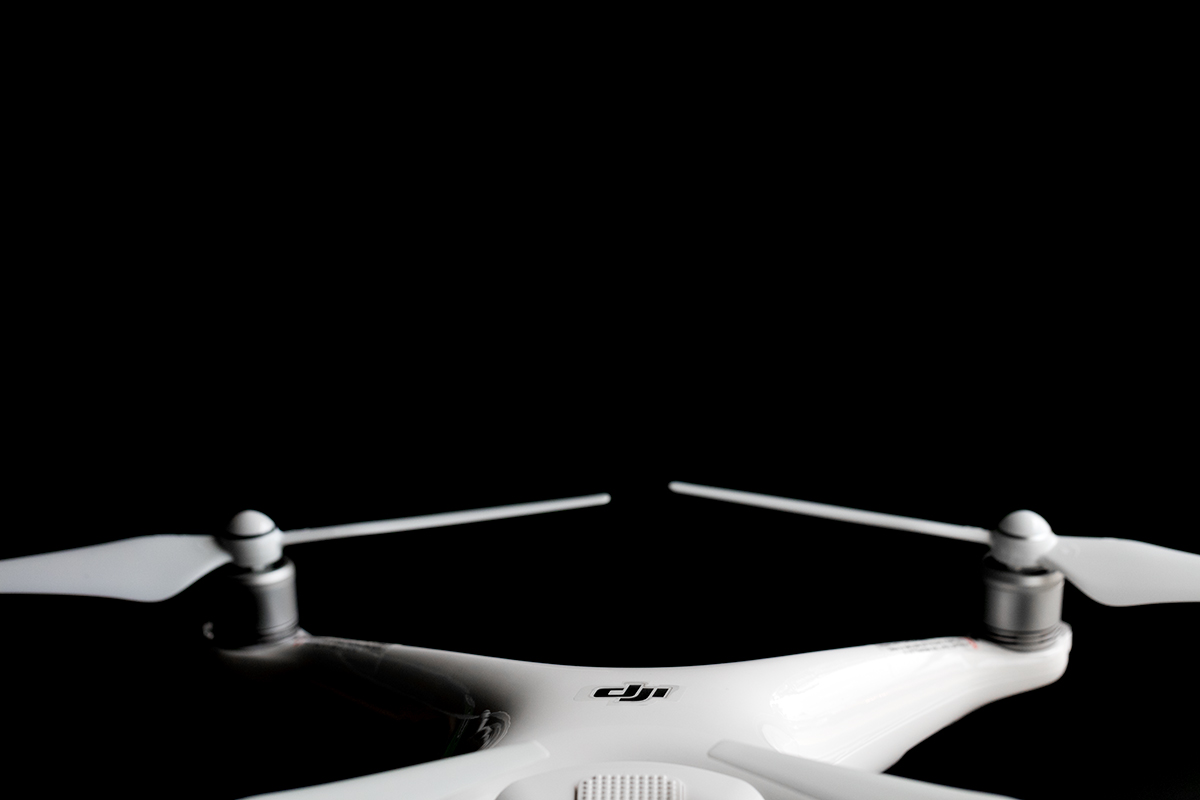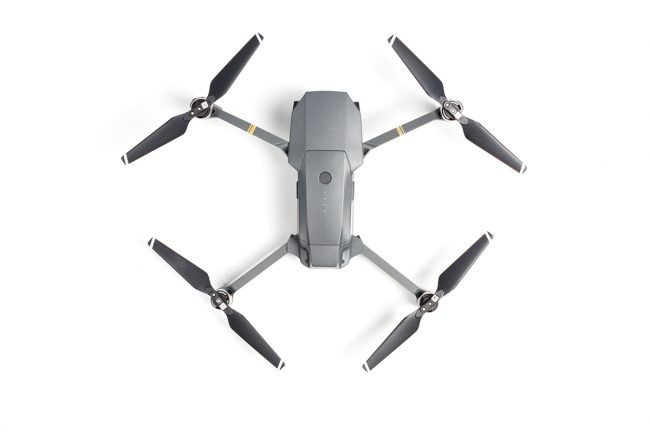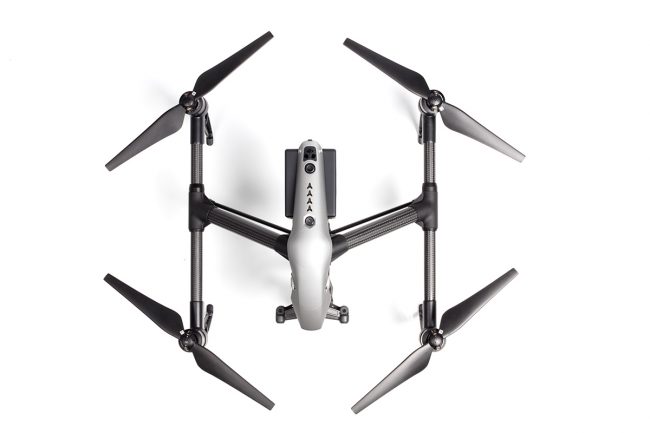Equipment
We’re Now Renting Drones – And Here is Your Guide

Starting today, we’re going to start offering drones available for rental. Obviously, this is a bit of a dicey decision, as there is a lot of variables that come into play when it comes to flying, renting, and servicing drones when compared to video and photography equipment. However, we’ve decided to do so because we want to continue to offer the best products available to our customers so that they can keep creating – without limitations.
That said, I wanted to take a moment to talk to you about flying drones, what you need to know, and some helpful tips on how to make your next drone rental an enjoyable one. As an owner of a DJI Inspire 1 myself, and someone who has flown dozens of drones over the years, I can speak personally and say that the experience is an incredible one. However, there first must be some rules and regulations in place before renting a drone.
How to Be Eligible for a Drone Rental
No registration with the Federal Aviation Administration (FAA) is required, though is certainly encouraged to ensure safe and responsible flying. Registration is only $5, and is good for 3 years after the registration date. While not required for personal flying, it is certainly encouraged by both the FAA and Lensrentals.com.
If flying your drone for commercial purposes, you’re required to hold a remote pilot airman certificate, and your drone must be registered with the FAA.
Breakdown of Flight Rules and Regulations
Along with being registered with the FAA, you must also abide by all federal and local laws pertaining to drone use. While laws vary from location to location, the general guidelines and requirements from the FAA are broken down as follows —
| For Recreational Flying | For Commercial Flying | |
| Who qualifies? | Anyone who is not using the drone for commercial purposes | Anyone commercial use in connection with the use of a drone. Examples include professional wedding or real estate photography or commercial cinematography. |
| Drone requirements: |
|
|
| Flight rules: |
|
|
Rental Rules
Users are responsible for inspecting and ensuring all drones are in working flying condition before use.
Lensrentals does not assume, and the customer indemnifies Lensrentals against any liability or claims resulting from use or malfunction of the equipment. Renter assumes all liability that may arise from use or failure of the equipment.
Renter assumes and shall bear the entire risk of damage to the equipment from any cause, except damage in the possession of the Shipper.
All drone rentals are subject to the full Lensrentals Rental Agreement.
Drones Available for Rental
At this current time, we’re bringing you 3 different drone models available for rental. For those unacquainted to DJI’s product line of drones, a short list of features and specs are listed below, but they’re broken down into three very simple styles and purposes. The DJI Mavic Pro is designed for portability. With its foldable arms, the DJI Mavic Pro folds down into a size slightly larger than a 12oz soda can. The DJI Phantom 4 Pro is noticeably larger than the Mavic Pro and is among the most common drone designs in recent years (The white ‘X’ shaped body). The larger size of the DJI Phantom 4 Pro allows for more stable flying and generally faster speeds. Finally, the DJI Inspire 2 Pro is the largest all in one quadcopter available from DJI and is designed for the pro market of drone flyers. Quite a bit larger than even the Phantom 4, the DJI Inspire 2 allows for even more stability and faster flying, a carbon fiber construction, and 360-degree camera access.
| DJI Mavic Pro | DJI Phantom 4 Pro | DJI Inspire 2 Pro | |
|---|---|---|---|
| Flight Time | ~21 Minutes | ~28 Minutes | ~27 Minutes |
| Max Speed | 40 mph | 45 mph | 58 mph |
| Sensor Size | CMOS 1/2.3” | CMOS 1” | CMOS 1″ |
| Image Size | 12.5 Effective MPs | 20 Effective MPs | 20 Effective MPs |
| Video Recording | C4K: 4096×2160 24p 4K: 3840×2160 24/25/30p 2.7K: 2720×1530 24/25/30p FHD: 1920×1080 24/25/30/48/50/60/96p HD: 1280×720 24/25/30/48/50/60/120p |
H.265 C4K:4096×2160 24/25/30p @100Mbps 4K:3840×2160 24/25/30p @100Mbps 2.7K:2720×1530 24/25/30p @65Mbps 2.7K:2720×1530 48/50/60p @80Mbps FHD:1920×1080 24/25/30p @50Mbps FHD:1920×1080 48/50/60p @65Mbps FHD:1920×1080 120p @100Mbps HD:1280×720 24/25/30p @25Mbps HD:1280×720 48/50/60p @35Mbps HD:1280×720 120p @60MbpsH.264 C4K:4096×2160 24/25/30/48/50/60p @100Mbps 4K:3840×2160 24/25/30/48/50/60p @100Mbps 2.7K:2720×1530 24/25/30p @80Mbps 2.7K:2720×1530 48/50/60p @100Mbps FHD:1920×1080 24/25/30p @60Mbps FHD:1920×1080 48/50/60 @80Mbps FHD:1920×1080 120p @100Mbps HD:1280×720 24/25/30p @30Mbps HD:1280×720 48/50/60p @45Mbps HD:1280×720 120p @80Mbps |
H.264 C4K:4096×216023.976/24/25/29.97/47.95/50/59.94p @100Mbps 4K: 3840×216023.976/24/25/29.97/47.95/50/59.94p @100Mbps 2.7K: 2720×153023.976/24/25/29.97p @80Mbps 47.95/50/59.94p @100Mbps FHD: 1920×108023.976/24/25/29.97p @60Mbps 47.95/50/59.94p @80Mbps119.88p @100MbpsH.265 C4K: 4096×216023.976/24/25/29.97p @100Mbps 4K: 3840×216023.976/24/25/29.97p @100Mbps 2.7K: 2720×153023.976/24/25/29.97p @65Mbps 47.95/50/59.94p @80Mbps FHD: 1920×108023.976/24/25/29.97p @50Mbps 47.95/50/59.94p @65Mbps 119.88p @100Mbps |
General Flying Tips
Make a Note of Your Altitude
When using DJI’s DJIGo app, your altitude will automatically mark your starting location as 0 ft/m. Before flying anywhere, I usually fly the drone up to the treetops and make a mental note of their altitude. As you fly the drone further away and maneuver it in various directions, it’s easy to get confused with your general depth perception. Having that mental note will help you recenter your bearings, and remind you of your flight clearance.
Green Means Go, Red Means Reposition
By default, all DJI drones, have four LEDs – one on each arm of the quadcopter. On the back of the quadcopter, are green LEDs, with red LEDs on the front. When still learning the techniques of flying, it’s always recommended to fly with the drone positioned facing the same direction as you. When turning the drone 180 degrees, by default, the controls don’t change to your position. So left suddenly becomes right, and right becomes left. It’s incredibly easy to get disoriented when this happens, so it’s always best practice to keep the drone in the same orientation of you at all times and to just rotate the camera as needed to get those specialty shots.
Never Fly Below 25% Battery
A general rule of thumb is that when your drone reaches 25% battery life, to bring it home. One of the major concerns when flying a drone is what is known as voltage drops, causing your drone to shut down and fall from the sky. While these cases are rare, they’re far more likely to happen on a depleted battery. It’s important to acknowledge the safety and risks when flying and always encouraged to land it at around 25% battery life.
Understand The Batteries, and Charge them Fully Between Uses
Another explanation for voltage drops comes in battery mishandling. The intelligent batteries within the DJI drone systems require that batteries be fully charged before retaking flight. Failure to do this can cause damage to the batteries and increases the likeliness of a voltage drop.
Calibrate Your IMU and Compass
Normally when owning a drone, you’re not required to calibrate your compass and IMU before each and every flight. But because these drones are being shipped all over the United States as rentals, it’s important to calibrate both of these before your initial flight with the unit. The process is simple, and can be done within the DJIGo software, and will ensure accurate and precise measurements from the unit while it’s in the air.
Hopefully, by following these rules and tips, you’ll be able to have a safe flight, with plenty of opportunities to capture the photos and videos you need for your next project. As always, we ask all those who rent drones from us to fly responsibly and follow all the federal and local laws to ensure safe and responsible flying. Have photos or videos of your drone flying? Post them in the comments below!
Author: Zach Sutton
I’m Zach and I’m the editor and a frequent writer here at Lensrentals.com. I’m also a commercial beauty photographer in Los Angeles, CA, and offer educational workshops on photography and lighting all over North America.
-
Kent D
-
Torsten
-
Torsten
-
Arun Hegde
-
Stanislaw Zolczynski
-
Zach Sutton Photography
-
Arun Hegde
-
Zach Sutton Photography
-
Arun Hegde


